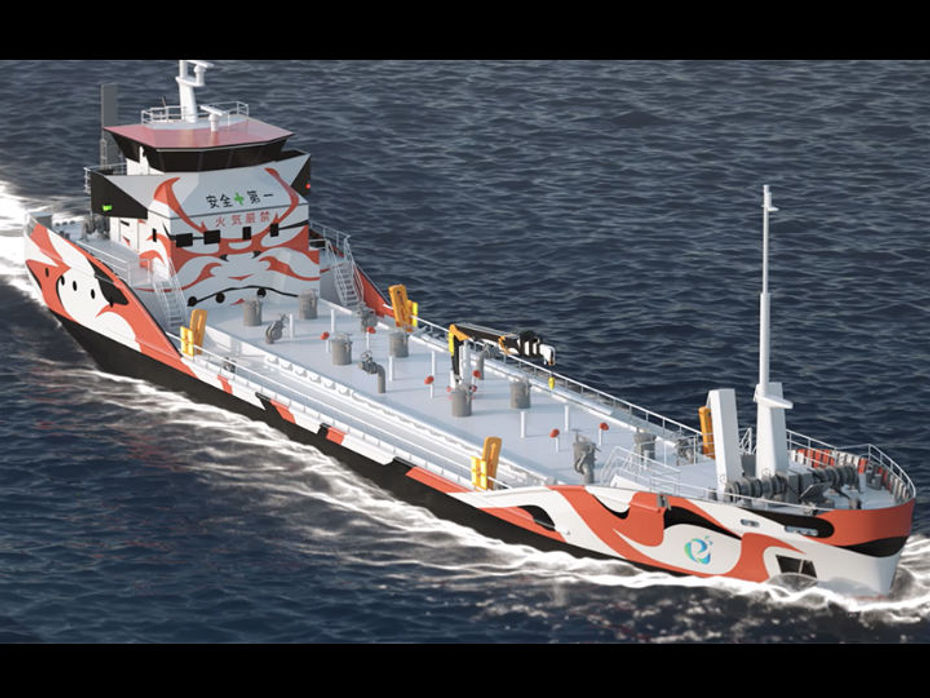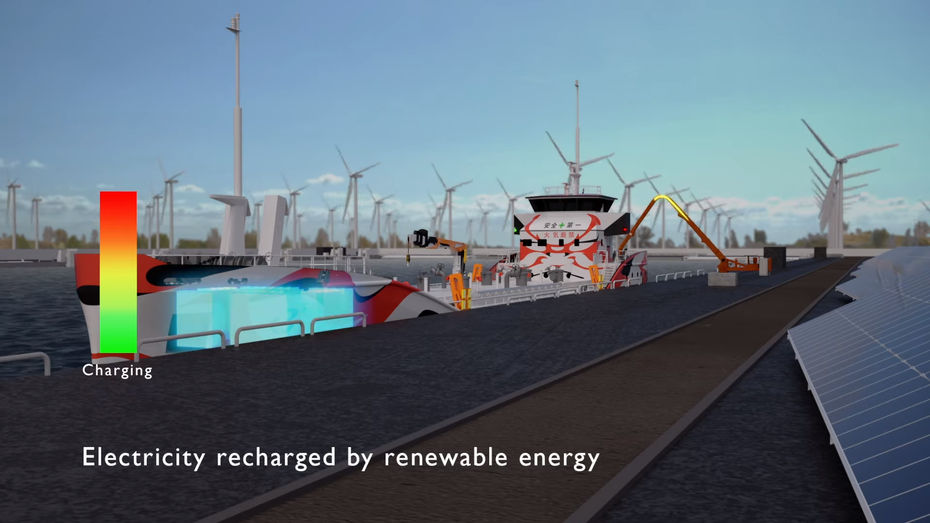
This Made In India 3-Wheeler Could Soon Be The Most Affordable EV
- May 18, 2020
- Views : 24977

We at ZigWheels are enthusiasts of any man-made marvel that moves. One thing that really caught our fancy is this upcoming all electric tanker by Asahi Tanker. This company is from Japan and has been in the marine industry since the 1950s. Asahi Tanker has announced that it will build the world’s first zero emission, all-electric oil tanker.
In August 2019, it established a research and development arm e5 Lab. This was created in collaboration with Exeno Yamamizu, a Japanese marine transportation company; MOL Group (Mitsui O.S.K Lines), another Japanese marine conglomerate, and Mitsubishi Corporation, a Japanese trading company. Yes, Mitsubishi is known for a lot more than just the legendary Lancer Evolution series of cars. The upcoming electric tanker will be designed by e5 Lab and two of them will be made. Their manufacturing will begin in March 2022 and is scheduled to be completed by March 2023.
Nestling inside the hull is a large-capacity battery system which is claimed to achieve the world’s highest level of stable performance. Its capacity starts from a massive 3,500kWh. For perspective, the Hyundai Kona Electric packs a relatively puny 39.2kWh battery pack. Asahi imagines the tanker can be charged using renewable energy sources such as windmills placed at ports. It remains to be seen as to how long it will take for such a large capacity battery to charge, though.

The battery is linked to four thrusters in total. For propulsion, it uses two 300kW Azimuth thrusters at the rear, which are capable of turning 360 degrees. That way, the same set of thrusters can be used for both forward and backward as well as sideways movement. To enhance docking capabilities, there are two 68kW thrusters up front, mounted sideways. The electric tanker is capable of reaching an average speed of 11 knots, which is about 20.3kmph. That might not sound that much but at the end of the day, it’s a cargo tanker, meant for carrying heavy oil at a rated load capacity of 499 tonnes. Asahi says that because of the ship’s core energy systems, it will be able to achieve zero carbon dioxide, nitrogen oxide, sulphur oxide and smoke emissions. Also, there’s a massive reduction in noise and vibration.
Since electric vehicles (including this tanker) have inherently less moving parts compared to their fossi fuel-powered counterpart, it reduces the burden for the crew. Moreover, everything will be automated and controlled electronically using Internet Of Things (IOT) with 5G connectivity.

Apart from pollution, one of the primary concerns are the working conditions of a cargo ship’s crew members. With such an environmentally friendly and advanced tanker, Asahi hopes to kill two birds with one stone. Not to mention about its contribution to Japan’s economy. It’s a total win-win situation, if you ask us. All said and done, when this becomes a commercial success, we hope the company formulates a plan to safely dispose their batteries too, once they reach the end of their lifecycle.

This Made In India 3-Wheeler Could Soon Be The Most Affordable EV

Here’s What We Can Expect From Revolt’s First Electric Scooter

This Hubless e-Bike Packs 1000Nm And Can Go 300km

Honda PCX e-Scooter Patented. India-bound?

BREAKING: 2025 Honda SP125 Launched In India

2025 Honda Activa 125 Launched In India

New Bajaj Pulsar Teased; Launch Likely In January 2025

2025 Bajaj Pulsar RS200; Launch In Next Few Days

Upcoming 2025 Bajaj Pulsar RS200 Teased Again

2025 Bajaj Pulsar RS200 Spied Testing Before Launch
India's largest automotive community
 Suzuki V-Strom SX
Rs. 2.16 Lakh
Suzuki V-Strom SX
Rs. 2.16 Lakh
 Suzuki Gixxer SF 250
Rs. 2.07 Lakh
Suzuki Gixxer SF 250
Rs. 2.07 Lakh
 Suzuki Gixxer 250
Rs. 1.98 Lakh
Suzuki Gixxer 250
Rs. 1.98 Lakh
 Bajaj Pulsar RS200
Rs. 1.84 Lakh
Bajaj Pulsar RS200
Rs. 1.84 Lakh
 Suzuki Gixxer SF
Rs. 1.47 Lakh
Suzuki Gixxer SF
Rs. 1.47 Lakh